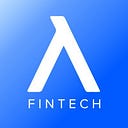Progress on DAG Consensus Protocol
Directed acyclic graph (DAG): Why is it a game changer? It functions as a network of interconnected branches that grows outward in several directions. Transactions can be confirmed in order of magnitude faster while remaining decentralized since each node confirms only the previous one.
The Apollo team is continuing the development of a viable mathematical model for DAG. That includes finding the best defensive countermeasures for attacks, as well as solutions to the following:
- Time complexity of topological sorting
- Solutions to the longest path problem
- Determining if a path between two vertices exists in a directed graph
- Processing logic
- Defining key guarantees and achieving Liveness
DAG’s advantages include:
- High transactions per second (TPS)
- Low transaction fees
- Nano transactions and micropayments
- Scalability
DAG solves the problems of scalability, high fees and long confirmation times. Apollo Foundation is working towards the following:
- Solve scalability issues of existing DLTs
- Distinguish the Apollo platform from traditional block ledger-based storage by employing an improved version of existing DAG-based protocols
- Process at least one million TPS (transactions per second).
Apollo (APL) all-in-one privacy currency combines features of mainstream cryptocurrencies in an unregulatable platform. With two-second block speed, APL is one of the fastest cryptos on Earth. “Apollonauts” use features such as encrypted messaging, smart contracts, decentralized exchange, decentralized applications and decentralized file storage.
Learn more at www.apollocurrency.com
